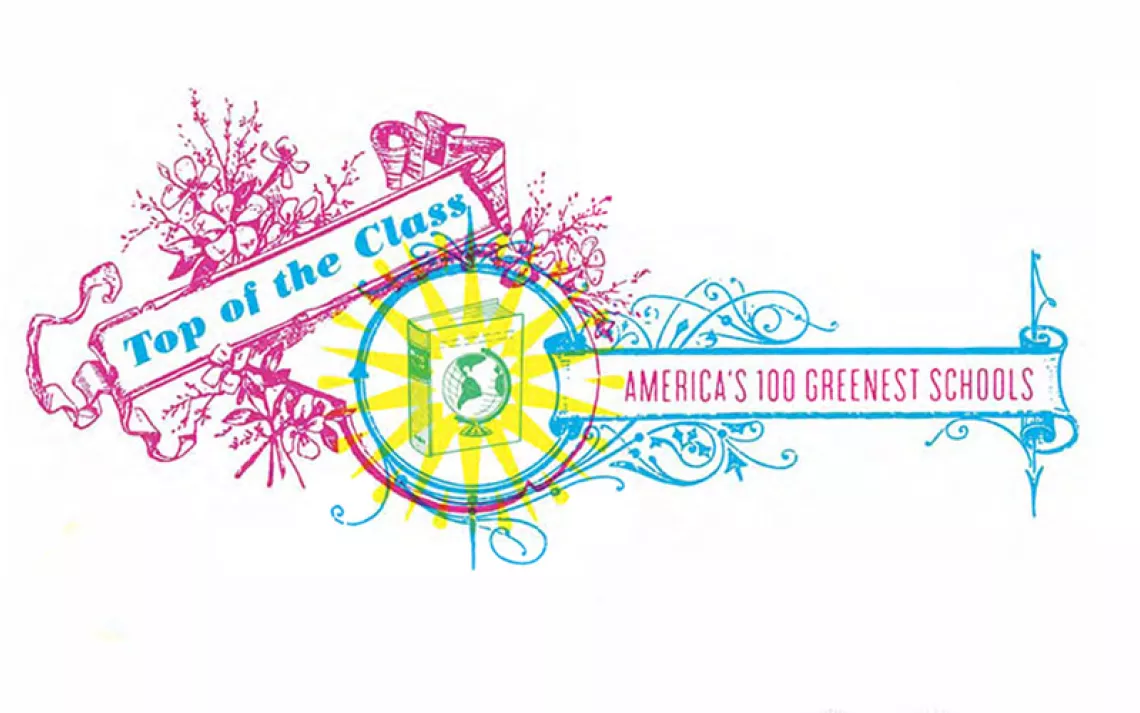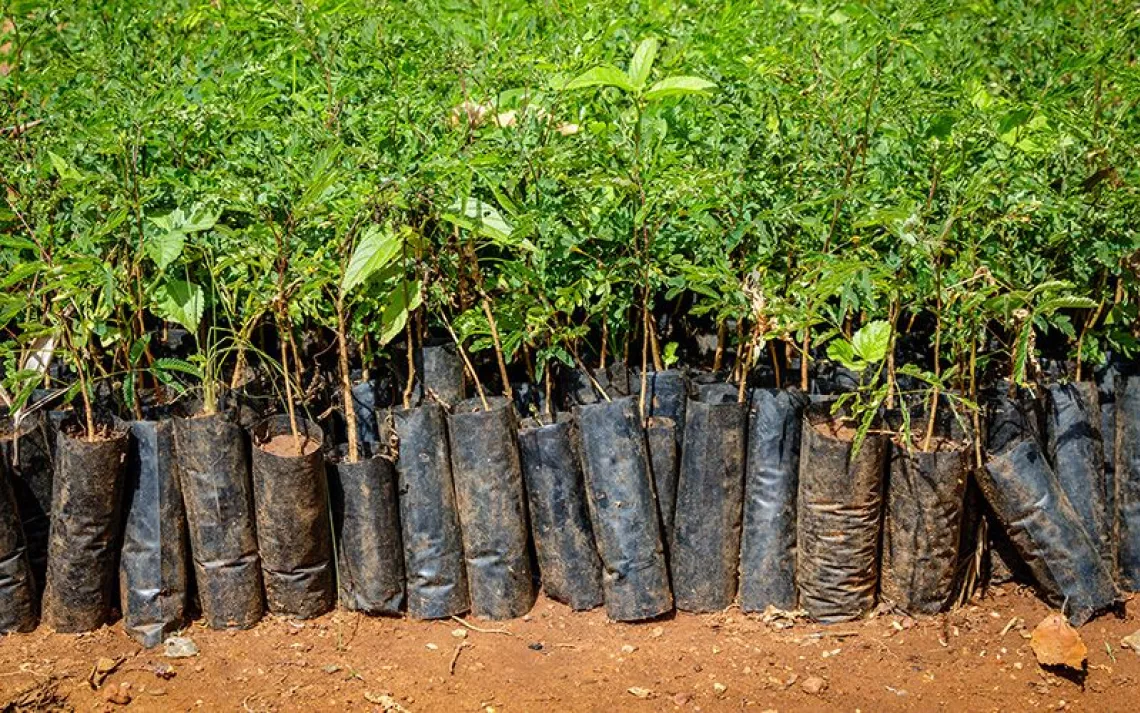The Other STEM
It's green, growing, and invaluable for budding sustainable farmers

Photos courtesy of Sterling College
Ed Fredrickson, PhD, moved to eastern Kentucky to teach kids how to farm their family land. "When I looked at the 100 poorest counties in the US, 29 of them were in E,” he says, “and I thought, 'Well there's a place I can be useful.'”
The land-grant university that offered him a teaching position as a range ecologist, however, had other ideas. "It turns out they weren't interested in eastern Kentucky. My peers were teaching industrial ag," he says. After graduation, the students left to manage mega-cornfields in Iowa and poultry barn operations in Tennessee.
At large universities like Fredrickson’s, STEM is about one thing: Using science to best nature. These institutions are graduating students who can produce tons of food—but only within the confines of an agribusiness setting. "The education being given in land-grant universities, for the most part, has served the agro-industrial corporations," says Mary Berry, the founder and executive director of the Berry Center, a Kentucky-based institution devoted to improving the lives of rural people. She's also the daughter of famous agrarian writer Wendell Berry.
The Berry Center is partnering with Vermont-based Sterling College to grow a new vision of farming in America, the kind of program that Fredrickson was seeking. "We're in dire straits here," admits Berry. "We have a local food movement that's been going on for 40 years now, and we're no closer to a local food system than we were when I started farming." She adds, "Fewer than 1 percent of Americans are farming, and only 15 percent of us are living in rural places. We have a big, big problem."

To address it, the Berry Center and Sterling are looking to the past. "It’s a distinctive form of hubris to imagine that the skills of the past are unnecessary, that how things were done in the past has no utility for us,” says Leah Bayens, dean of Sterling College's new Wendell Berry Farming Program.
While traditional ag schools have pristine labs stocked with state-of-the-art microscopes, centrifuges, and pipettes, the Wendell Berry Farming Program's lab is Henry County, Kentucky. Fredrickson is building his curriculum around visiting local farms. Each is a micro-experiment, he says, adding that he likes to teach from what he calls the "range position."
"You get down on your knees and put your nose to the ground. What's the smell? How does the grass taste?" Of course, he also uses techy tools like soil surveys and satellite imagery, but the science of range ecology is all about understanding how plants, animals, and the environment work together as an ecosystem. This is quite literal STEM: learning how the land is doing by physically examining the alfalfa, grass, and radish stems on your farm.
Students also learn how to use an invaluable piece of technology for low-carbon farming: the draft animal.
"It's very easy to view draft-animal power as anachronistic when your frame of reference is 80,000 acres of cereal crops," says Rick Thomas, who moved from Sterling in Vermont to Kentucky to teach at the new school. Draft-animal power, he says, helps new farmers understand appropriate scale, and how to work at a human pace. At a steady plod, you have time to observe what's growing and what's not.

Rigs drawn by horses, mules, and cattle encourage creative engineering too. Few manufacturers still make this equipment, so farmers must craft their own tools—and repair them. This certainly counts as engineering and tech—it's just a broader definition of tech, and one that doesn't rely at all on fossil fuels. "We're not trying to go backwards,” Thomas is quick to clarify, “but there are a lot of good lessons that we have ignored by being fossil-fuel-based."
Thomas is already seeing one of those lessons play out on a few bits of pastureland on the Kentucky campus that are too hilly to hay with an animal-pulled rig. Thomas is allowing these margins to return to their natural state, and in just a few months, milkweed popped up, creating habitat for pollinators. His takeaway is that just because you can work an acre doesn't always mean that you should. Areas that aren't producing cash crops can still add value to landscapes.
By looking back on traditions, the STEM lessons at the Wendell Berry Farming Program also set up students for a better economic future. Pesticides, synthetic fertilizers, and large pieces of farming equipment are huge expenditures, especially for new farmers. Draft animals are a significantly lighter lift—plus you can breed them to raise a new generation. Good luck doing that with a tractor.
Further helping with the debt situation, the Wendell Berry Farming Program is free—though students must cover room and board. "The ethics of graduating people we expect to farm, with the burden of the great expense of farming but also crippling educational debt, was something we thought a lot about," says Bayens. She and her colleagues worked to secure a five-year grant from the NoVo Foundation. This means students will graduate with the economic freedom to dive right into the agricultural life. "I can scratch that off the list of things keeping me up at night," says Bayens.
After two years, students in the program will emerge with a bachelor of arts degree, and that's on purpose. While some ag programs focus solely on science, it was important for the Wendell Berry Farming Program to build a curriculum rooted in the liberal arts. "I do not know a successful farmer who is not a scientist," says Thomas. "I do not know a successful farmer who is not firmly rooted in their community too, and that's where the liberal arts can play an important role."
Berry agrees. "We are desperately in need of rural leaders. Not leadership as in, you choose to lead and not farm, but farm people who can go to local meetings and speak bravely for what they believe."
Stems, after all, are only one piece of a living organism. To thrive, you need more than just a stem; you need roots.
 The Magazine of The Sierra Club
The Magazine of The Sierra Club



